We love cricket and to preserve it, we have cricket laws. Nothing can be as simple as this because when I hear the word cricket, I can feel the hair on my skin rise with anticipation. We all have some fond cricket memories, and you are certainly invited to take this nostalgic walk down the lane with us. We are starting from your home…
Cricket Laws: The Dining Table Conversations
I can recall faint memories from my childhood; especially during the World Cup seasons, when all of us youngins would argue about who is the best batsman. As time passed, we grew up and our meet-ups were more and more scarce. Indeed, it was taxing but we would always move around our schedules to meet, especially during Tournaments. Now, we sit at dinner tables with the television on, sometimes arguing and sometimes cursing the Umpire. Somehow, we all were quite certain that we had the proper knowledge of the cricket laws…
Unfortunately, no we did not. Indeed, the basic cricket rules are quite simple, but the cricket laws make cricket beautiful. Moreover, these laws have been revised and amended over time. So, as the game evolved, the laws developed subsequently. Needless to say, cricket laws most certainly protect the players, the lovely devotees, and this timeless game.
Why are Cricket Laws Important?
It is rather unfortunate that whenever we hear the word ‘laws,’ we somehow find ourselves in a strict environment, perhaps even suffocated. Nonetheless, the negative notion attributed to this word has nothing to do with cricket, we assure you!

This timeless game has been preserved for years as the first cricket laws were written and subsequently revised in 1774. Moreover, the London Club was responsible for making and publishing these laws. They also included the first official recording of the rule that a pitch must be 22 yards in length.
Maybe a Knight in Shining Armor?
Laws exist in our society because everyone needs to feel protected. For instance, our basic right to the safety of life, the very reason we breathe in peace is because of laws. Similarly, cricket laws exist solely to protect the interest of everyone associated with the game. This includes the players, the audience, the sponsors, the official councils, etc.
An unfair game will leave everyone heartbroken. Even more so, it will be chaotic on the field. Thus, the laws were established to impose fair gameplay while promoting sportsmanship and a bucket load of fun! Cricket is certainly an intense game which involves great physical exertion and a keen focus. Every player on the field trains very hard and practices to build themselves up. Thus, cricket laws protect us to ensure that no one is dealt an unfair hand!
There is Room for so Much More!
We all are aware of the three cricket formats and, also perhaps the less popular, relatively new but promising T10 cricket format. However, the traditionalists can vouch that the primary forms of cricket were quite different and lengthier, compared to the modern age.
For instance, the earliest cricket format was played for six days with one day as a reserve. Moreover, the field restrictions were quite different compared to limited overs cricket. Both the teams had to play two innings each if needed but 90 overs had to be bowled every day. This might sound dreadful to some of our readers while some of you are probably reminiscing about the old days.

However, it is important to highlight the fact that cricket laws enable the flexibility and boundaries of the cricket formats. These laws protect everyone involved with cricket but other than that, it also makes space for more cricket ideas to flow. Numerous cricket tournaments with innovative rules can be played and we can enjoy the sport while the cricket laws are being implemented. For example, the 6ixty has different cricket laws and a vast fan following. How did that happen? Indeed, it was cricket laws.
Cricket Laws; Not A History Lesson
Cricket is among the few sports which refer to the governing principle of its gameplay as Laws. As mentioned earlier, the first laws of cricket came out in 1744. Presently, 42 Laws exist and have been amended seven times. So, let’s take a trip down memory lane and rediscover history.
Marylebone Cricket Club; It Started From the Streets of LONDON
Since 1788 the Marylebone Cricket Club located in London owns and maintains the cricket laws. MCC certainly does a great job of keeping a close eye on the ball. Once upon a time, MCC was a private cricket club and an official cricket governing body.
Indeed, it still retains copyrights to the laws and is the sole body that can alter them. However, any altercations occur only after comprehensive discussions with the other cricket associations. That is to say, the ICC and, the Association of Cricket Umpires and Scorers are the parties that are consulted before any cricket laws are amended.
International Cricket Council; Habibi, All is Good!
International Cricket Council or the ICC is the current official cricket governing body. Indeed, ICC filled the role of MCC and does an impeccable job at keeping the fanbase happy. With its headquarters located in Dubai, UAE, the ICC was founded at the Imperial Cricket Conference in 1909.
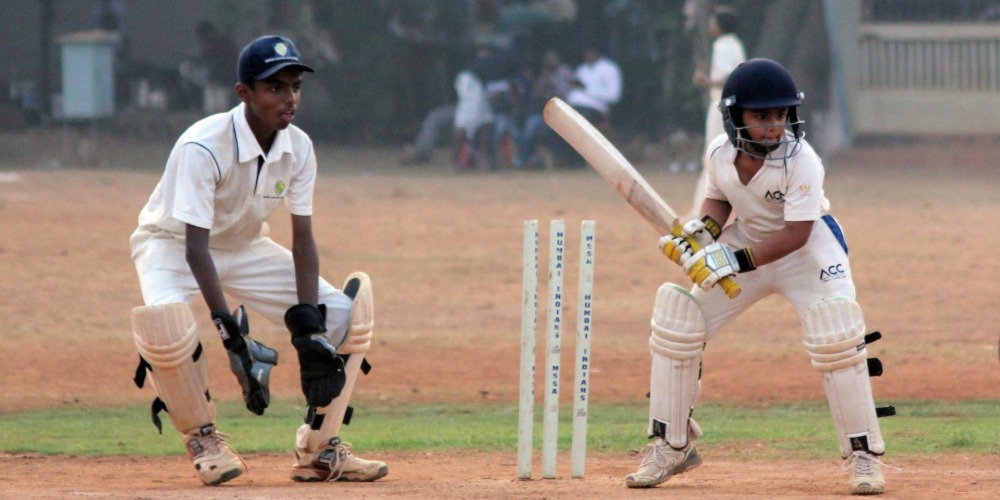
However, it was renamed as International Cricket Conference in 1965 and undertook its current name in 1987. No, there are no plans of changing the name now. But, this clearly shows that our ancestors loved cricket (wanting to decide the perfect name for their baby). Moreover, the sprouting generation is nothing less than die-hard fans either.
Oral Tradition; No Dental Records Found.
Honestly, no one knows how and when cricket was born. Although, it was first recorded at Guildford during the 16th Century. Back in those days, cricket was believed to be a boys’ game but in the early 17th century things changed. Adults started playing this game more frequently and rather took a keen interest in it. Although no specific rules or laws had been allocated to cricket, the players would always verbally define certain gameplay rules before proceeding.
Moving along to the late 17th century, cricket was getting steamy attention from bettors, and it became a popular betting game. Cricket certainly attracted high stakes but instances of teams being sued for non-payment of wagers were huge a drawback.
Although, in the current day and age, online cricket betting makes you wonder what the old punting days must have felt like. Indeed, cricket is a fantastic game to bet on, fanatics in the 17th century knew it as well. However, they did not know how to bet on this game because now many best online cricket betting sites like 1xBet sportsbook offer legitimate bonuses and exciting betting markets. Unfortunately, we are in the 17th century right now so let’s stick here.
Article of Agreement; The Very First
In 1727, stakeholders Charles Lennox; the 2nd Duke of Richmond and Alan Brodrick; the 2nd Viscount Midleton, coordinated two matches. It was confirmed that an ‘article of agreement’ was written to establish the specific rules that had to be followed by the teams.

Fortunately, the original articles about the first cricket laws written by Brodrick and Richmond, are well preserved. Currently, they are in the possession of the West Sussex Record Office (WSRO) along with other documents acquired from the Goodwood House in 1884.
This was a crucial historical moment when cricket laws were drawn in writing for the very first time. When the first written rules of cricket were formerly agreed upon it certainly changed history. The main aim of this exercise was to ensure that any conflict between the patrons during the gameplay can be resolved.
Moreover, the concept of the written agreement was to define rules of play and later these rules were codified as the Laws of Cricket. Their wording might be a bit troublesome, but we think they’re wholesome.
The article had 16 points, many of which can be easily comprehended by anyone and can be found in the modern era of cricket. For example:
- A ball caught, the striker is out
- When a ball is caught out, the stroke counts as nothing
- Catching out behind the wicket is allowed.
Click here to try the best cricket odds at 22bet Sportsbook
Points that Differ from Modern Cricket Laws
One cannot deny that cricket has come a long way and the gameplay has evolved immensely over the years. Indeed, the laws have been amended from time to time but only when needed. The governing bodies carefully inspect and assess hypothetical yet real circumstances which can affect the match. The changes are implemented following a thorough evaluation. Here are a few examples:
|
Written in the Article of Agreement |
Modern Era |
|
The wickets shall be pitched at twenty-three yards distance from each other. |
The length of the pitch must be 22 yards. |
|
Twelve Gamesters shall play on each side. |
Each team comprise eleven players. |
|
The Batt Men for everyone they count are to touch the Umpire’s Stick. |
Batsmen must touch the ground behind the popping crease to ensure they do not lose their wickets. |
|
No player shall be deemed out by any wicket put down, unless with the Ball in Hand. |
Runouts no longer necessitate the ball to be in the hand. |
Cricket Laws, 1744 – It Begins!
Cricket laws were first enacted in 1744 but they were not printed until 1755. They were probably an advanced version of an earlier code and by ‘earlier’ code we mean the rules which had been initially but informally devised. Moreover, the main aim of establishing proper rules and laws was to somehow institute universal codification. To clarify, the gentlemen and noblemen members of the London Cricket Club wanted to establish proper rules for the game that everyone had to adhere to.
These rules are outdated but at the same time, it is an important development for cricket. Moreover, most of these Laws still exist in the modern age. A summary of the points will certainly reflect the form of gameplay that was practised back in the old days. Have a look:
Tails!
Indeed, the idea of the coin toss was established in 1744. We have seen this in the modern age as well, flipping a coin decides which team will get to pick first. The captain that wins the toss initially has an upper hand but anything can happen on the field…
2 Even Numbers Make a Pitch
Back in those days, the cricket laws declared that the pitch must be 22 yards long. Indeed, this is another Law that is still with us.
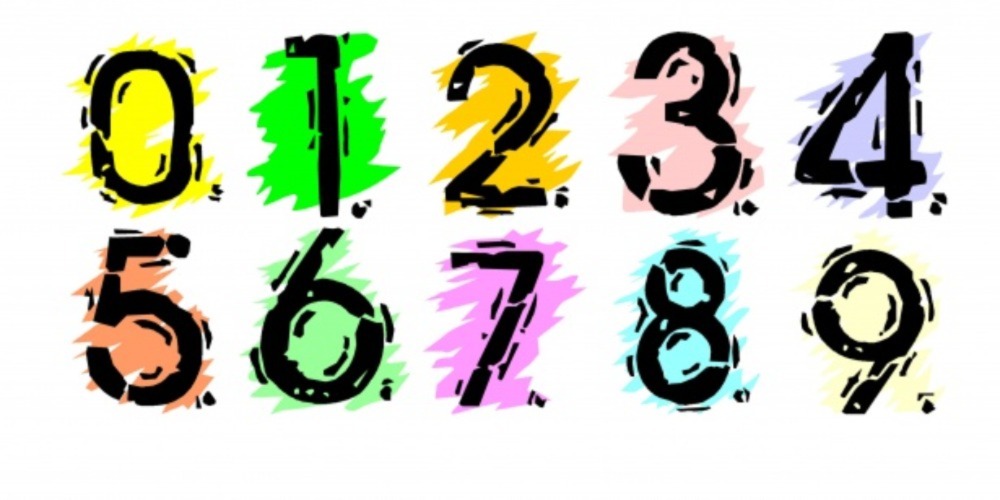
Even now, the length of the pitch is 22 yards, and this law has not been amended. Scoring runs on a 22-yard pitch is certainly backbreaking. Hats off to those batsmen!
No Room for Random Balls
It was stated that the weight of the balls must be exactly between five and six ounces. Surprisingly, the cricket balls used now weigh between 5.5 to 5.75 ounces. However, the weight of the balls might be different for women’s and children’s sports.
Overs; 6 or 4?
Currently, 1 over consists of 6 balls but in 1744 it was decided that 4 balls = 1 over. Indeed, some of the cricket laws have changed over time. So, change is not bad after all, right?
Popping Crease; Out?
The current laws state that the popping crease, which is the back edge of the crease marking, must be in front and adjacent to the bowling crease. Moreover, it shall be 4 ft from the bowling crease. However, the laws of 1744 enacted that the popping crease must be precisely 3 feet and 10 inches before the bowling crease.
The Wicketkeeper Cannot Be Cheeky!
It was decided that the wicketkeeper must be still and silent till the ball is bowled. This law was solely devised to ensure that the batsmen stay focused. Any slight distraction or sharp sounds can throw a batsman off their game.
Cricket Laws, The First Tragic Cricket Story
Two laws developed after the unfortunate death of a good cricketer Jasper Vinall. This was the first cricket accident that resulted in a fatal injury. In 1624, Vinall was unintentionally struck on the head by a cricket bat during a match and after thirteen days of suffering he passed away. Hence, in 1744, laws were made to ensure this does not happen again.
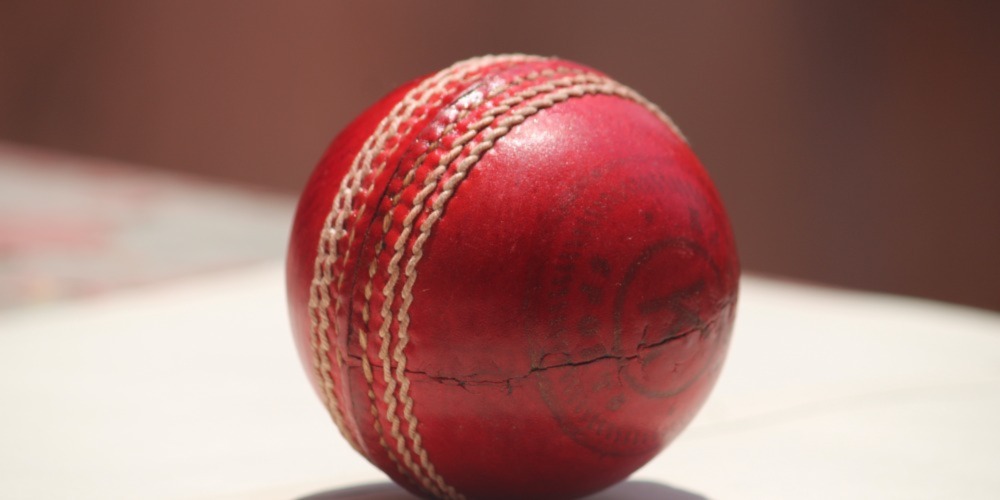
Vinall was a fielder who was accidentally struck on the head by a batsman. The batsman was trying to hit the ball for the second time to avoid getting caught and during this commotion, Vinall was collateral damage. Hence, it was later decided that hitting the ball twice and obstructing the field will automatically result in an ‘out.’ This law is currently practised as well and is the 37th Law in Cricket Laws. Moreover, it is also considered to be one of the ten methods of dismissing a batsman.
Chertsey vs Hambledon
Something interesting happened the day Chertsey and Hambledon played against each other in 1771. Chertsey’s all-rounder cricketer Thomas White used a bat with the width of a wicket. As no official laws were allocated to prevent this from happening, the Hambledon players could not do much.
However, they did register a formal complaint which was signed by the three prominent players of Hambledon: Thomas Brett, Richard Nyren and John Small. As a result, the lawmaker of the game decided that the width of the bat must be four and one-quarter inches. This Law was later included in the revision and even now the width of the bat remains the same.
Umpire or Queen?
An umpire certainly plays a huge role in cricket and this statement will stand correct even in the 17th century. Undoubtedly, an umpire holds a supreme place in cricket and on the field. For instance, an umpire can declare a batsman ‘out’ even if they were not out. Hence, the cricket laws serve as a handbook for umpires and even in the 17th century, the umpire was like the Queen of cricket. Shall we have a look?
Click here to try the best cricket odds at 22bet Sportsbook
Are You Drunk on Power?
According to initial laws drawn up in 1744, the umpire was allowed a certain level of discretion. This showcases that the umpire’s verdict is always ‘absolute,’ and they were the ‘sole judges’ of the game.
WE WERE ON A BREAK!
The subheading might be a bit misleading, but the umpire was responsible for allowing the players to take certain breaks during matches. For instance, the umpire must allow two minutes for a new batsman to arrive. In addition to this, an umpire must also permit a brief break of ten minutes between two innings; for meals and rain (if predicted.)
Appeal to Appease
The Umpire was given high importance in the 17th century thus, the responsibility of fair play was entirely upon them. However, there was an interesting task that the umpire could not indulge in. They could not give a batsman ‘out’ if it was not appealed by the fielders. To clarify, it does not matter how blatant the wicket was, if there is no appeal there is no ‘out.’
Cricket Laws, 1774 – We Meet Again.
After 30 years the Laws were revised in 1774 by a committee meeting chaired by Sir William Draper. Other prominent pioneers of cricket that were also part of the committee were the 3rd Duke of Dorset, the 4th Earl of Tankerville, Charles Powlett, Phillip Dehany and Sir Horatio Mann. Moreover, Sussex, Hampshire, Kent, Middlesex and London are the clubs and counties that were represented in the meeting.
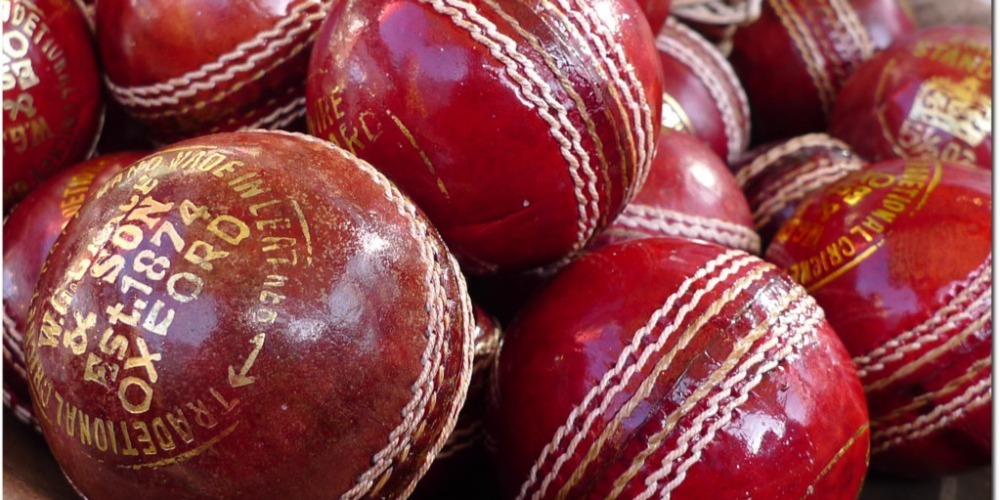
After three decades, a committee decided to sit down to revise cricket laws which only meant that cricket was gaining popularity. Thus, as the sport increased its fan base the officials decided to revisit the Laws and a few points were added. Let’s have a look-see.
Overbearing Bat
If you remember, we had discussed earlier that in 1771 an incident had occurred between two clubs where a player had a cricket bat with a length similar to a wicket. Keeping that in mind, the Law was added to prevent this action in the future. However, in 1774 this Law was revised, and it was reinstated that the width of the bat must not increase by four inches and one quarter in the widest part.
Bowlers are Warned
As the Laws were being revised, the bowlers were given some significant instructions to which they had to adhere to. For instance, the bowler must deliver the ball while one of their feet is behind the bowling crease and inside the return crease.
Moreover, a bowler shall bowl four balls before changing their wickets, although they can do this only once in the same inning. Indeed, these were important laws for bowlers and clearly, these thoroughly revised points were making room for smoother gameplay.
LBW – Ligaments Before Wood Sticks
You must be familiar with the concept of Leg Before Wicket or LBW, however, if you are not then we will define it. LBW is one of the methods of dismissing a batsman and is certainly an important one as well.
Simply put, the striker is out if their leg obstructs the ball which was en route to hitting the wickets. Currently, the LBW rules state that a batsman is out if the umpire rules that the ball would have struck the wicket, but any part of the player’s body (barring the hands) intercepted it.
LBW is certainly considered to be a crucial development at that time. Numerous batsmen would stop the ball from their leg as a negative reaction to the pitching delivery. Thus, LBW was introduced to promote fair gameplay without foul memories and unhealthy sportsmanship.
Click here to try the best cricket odds at 22bet Sportsbook
The Rule of Stumps and Bails
It is a rather funny yet unfortunate cricket story that we are about to indulge you in. But before we do that you should know that stumps are the vertical wooden sticks behind the batsmen and bails are the smaller sticks placed on top of the stumps. In the current era, three stumps and two bails form a wicket, however, back in 1775 there were only two stumps and one bail.
Another Hambledon Story
It was a heated match between Kent and Hambledon, as they had brought out their star players on the field: Lumpy Stevens and John Small. Small had to chase the target score and he succeeded beautifully. Hambledon won by 1 wicket but in reality, Lumpy did beat Small.
During the second innings the ball passed between the wickets three times without touching the stumps or the bail thus, Small was not declared ‘out.’ Later Lumpy protested and the third stump was introduced although it took a significant amount of time to become universal.
Wickets; As We Know Them Now
Numerous variations have been made to the wicket over 300 years and each variation was significant to the game. Presently, the wicket comprises three wooden stumps that are 28 inches tall and are pitched along the batting crease with an equal distance between each of them.
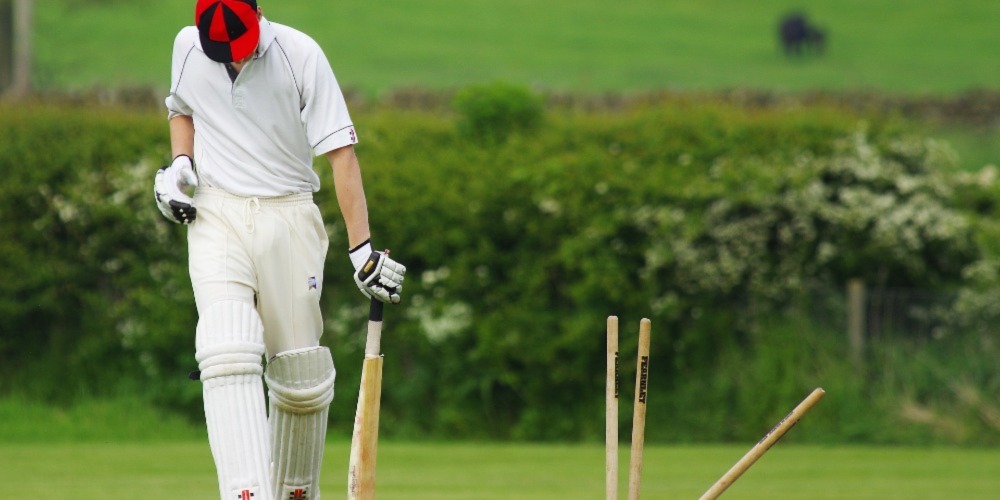
They are positioned in a way that they are 9 inches wide and two wooden bails are placed on top of the stumps. These bails must not protrude more than 0.5 inches above the stumps and must not be more than 4.31 inches long.
Cricket Laws, 1788 – MCC
Marylebone Cricket Club was established in 1787 and is still standing. The MCC has played a significant role in the development, monitoring, and uprising of cricket. In addition to this, the club was once the governing body of cricket, a role which is now filled by the International Cricket Council.
Even now MCC has a considerably high influence worldwide as it still possesses the copyrights of the cricket laws. Located in London, MCC is an active cricket club with a booming history and a prominent name on the pages of cricket.
Immediately after its establishment in 1787, MCC instantly took charge. It embraced the responsibility of revising and officially publishing the cricket laws which subsequently helped with the growth of cricket. As the Laws were established properly, they were certainly being implemented more strictly.
However, the universal use of these laws was still far ahead in time. Nonetheless, going back to 1787, when MCC took over it made some important changes to the Laws. The club revised and published the new version in 1788 which was called “The Laws of the Noble Game of Cricket.” Although the 1788 Code is more descriptive and furnished than the 1774 Code, profoundly, they are both the same.
Click here to try the best cricket odds at 22bet Sportsbook
Stumped Again.
Indeed, the law for the stumps was revised but unfortunately, the use of the third stump was not specified. This showcased that the relevance of the third stump was not universal and might take some time to catch on. Nonetheless, the third Law stated that “the stumps must be twenty-two inches out of the ground, the bail six inches in length.”
LBW – Ligaments Before Wood Sticks 2.0
The LBW Law was revised in the 1788 Code and the phrasing was changed. In the previous Code it was stated that “the batsman is out if, with design, he prevents the ball from hitting the wicket with his leg.” However, in 1788 the Law was re-evaluated and the clause “with design” was replaced with “the ball must have pitched straight.”
Show Some Love to the Pitch
Before the revised Code of 1788, cricket pitches were left untouched and in poor conditions. This Code highlighted the importance of a pitch and for the first time, it included protection of the pitch as a clause in cricket laws. With mutual understanding and agreement among the teams, the pitch had to be rolled, watered and mowed. In addition to this, the use of sawdust was also officially granted. Thus, the revised Laws of 1788 were quite fruitful in the expansion of cricket.
Cricket Laws; How Many Revisits, My Friend?
The world is constantly changing. Due to a rapid-paced life and declining attention spans, cricket is changing as well. Thus, cricket laws need to be revised after a thorough re-evaluation of the circumstances. Although the MCC has not made many significant changes to the Code over the years, the Laws were always re-examined and assessed periodically.

For instance, in 2017, which is the last time the Code was revised, gender-neutral terminology was introduced (excluding the term batsman) and a new code of conduct was also established. Indeed, the main gist of the cricket laws have always been the same, but some small changes were certainly made over the years. Here’s a list of when the Laws were revised:
| Date | Code |
| 19th May | 1835 Code |
| 21st April | 1884 Code |
| 7th May | 1947 Code |
| 21st November 1979 | 1980 Code |
| 3rd May | 2000 Code |
| 1st October | 2017 Code |
Cricket Laws; What Happened Afterwards?
Humans are constantly evolving, and our interests are rapidly changing. Society is always acting like a mysterious shapeshifter and what once seemed impossible to change only now seems outrageous. Thus, to keep up with the change the laws progress simultaneously.
However, changes made or added to the Law are not bound by a publication of a separate code. Therefore, important changes made to the cricket laws were also done through various revision editions of the code. Moreover, each code has more than one version which is automatically considered better than the original code.
Significant Improvements; Change is Constant. Change is Good.
Since 1788, several crucial changes were made to the cricket laws and each edited form of the code was known as a separate edition. So, let’s dive in!
What’s Poppin?
What popped were the inches! Okay, let’s be clearer. The distance between the popping and the bowling crease was specified to be 46 inches in 1744. However, it was increased to 48 inches in 1819.
Can y’all make up your minds?
The bowling crease has always been a controversial cricket topic and has significantly changed from its original form. Wicket is the external factor responsible for the changes in the bowling crease over these years. Initially, the crease was specified to be at three feet on either side of the wicket, and later in 1902, the length increased to four feet (both sides: eight feet and eight inches in total).
However, the width of the wicket increased from eight to nine inches in 1939 which by default, altered the crease. It had to be readjusted and reduced by the dimensions of the wicket thus, the bowling crease decreased by half an inch on both sides.
Click here to try the best cricket odds at 22bet Sportsbook
Whitewash the Creases, Not Your Flaws.
Before any cricket match begins, the ground and the pitch (that has to face rigorous pressure) are groomed. However, back in the day, the creases were cut into the turf and not painted. Indeed, it seems like an ample amount of manual labour but in the 19th century, Alfred Shaw recommended the idea of using whitewash for drawing the creases on the ground. Thus, this thought latched on, and the whitewash era began.
Hi. I’ll take care of you. Sincerely, Law.
Initially, no one would tend to the cricket grounds and the beaten-down pitches. But in 1788, pitch protection was introduced and the Law for safeguarding the pitches was established. The Law was authorised, but numerous changes were made to the code to ensure the pitch was prioritized. For instance, the pitch had to be rolled for a specific amount of time, covering the bowler’s footholes, etc.
Wicked or Wicket or the Weeknd? Decide already!
The wicket itself has made quite a journey during the evolution phases of cricket. Thus, there is no harm in stating that cricket and the wicket progressed simultaneously. The dimensions of the wickets changed numerous times before the ideal form was chosen. Currently, the measurements of the wicket are twenty-eight inches by nine inches, which was decided in 1931 and approved again in 1947. Initially, the two-stump wicket in the 17th century was believed to have been twenty-two inches by six inches.
Holding A Bat Makes Me Happier Than Holding Your Hand
In our defence, holding the right cricket bat can make any batsman happy. Thus, the width of the bat was left untouched after the events of 1771. Remember? Recap: White used a bat that had a width of a wicket and resembled a hockey stick. After this incident, the width of the bat changed.

Moving along, the length of the bat was specified in 1835, and it was decided to be precisely thirty-eight inches. No amendments were made and currently, these dimensions are specified and followed by every batsman.
Cricket Laws; But The Ball Was In Your Court.
This beautiful sport is primarily based upon two extremely crucial elements: The bat and the ball. Thus, if one of these things is off-key, the entire match can be a disaster. The weight of the ball has not changed since 1774, but the circumference of it has certainly been a hot topic.
In 1838, the circumference was decided to be between 9 to 9.25 inches, but it was later reduced in 1927. Currently, the circumference of men’s cricket balls is between 8.06 to 8.69 inches. The size and the circumference of cricket balls are different for men, women, and children hence, making this sport perfectly enjoyable for everyone!
Overs; Yet Another Thing They Cannot Decide?
The cricket laws have been amended numerous times and there is no surprise if one aspect of the game is defined multiple times. Similarly, in 1774, one ‘over’ consisted of four balls and this rule did not change until 1889. A five-ball over was introduced but later it changed to six balls per over in 1900.
In comparison to this, Aussies and other countries had a more vibrant approach towards the game. Their overs varied from how the Brits played their game thus, regardless of the laws changing, everyone had their unique form of gameplay. However, in 1979 the six balls per over Law prevailed and was practised worldwide.
Click here to try the best cricket odds at 22bet Sportsbook
Bowlers… Behave Yourselves.
The concept of a ‘no ball’ was first introduced for bowlers overstepping the bowling crease but it took years for the ‘no ball’ rule to develop accurately. Moreover, there was no proper code of conduct for bowlers thus, Laws were developed to address this issue.
The legislation against ‘throwing’ was first tried in 1816 when the ‘roundarm’ bowling style had started trending. It was stated that the bowler’s arm should not extend above the elbow during their delivery thus, restricting the bowler’s conduct to great lengths. Undoubtedly, this rule was blatantly ignored in many matches and bowlers refused to acknowledge it, but matters reached a crisis during the roundarm test matches in 1827.
However, the bowlers’ gameplay chaos subsided in 1835, and in 1864, the ‘overarm’ bowling style was introduced. In addition, in 1899, the umpires were given the freedom to call out a ‘no ball.’
Maybe a good bowler NEEDS to be aggressive, not just in their delivery but also in their personality. Thus, curbing these aggressive yet talented beasts was certainly not a walk in the park.
Follow Me or Follow-On
Follow-on is when the opposite side is asked to bat immediately after the previous inning during a two-innings match. The concept of follow-on was vastly unknown and greatly unpopular in the 18th century thus, the Laws did not focus on it.
The matter was left unattended until 1835 when it became mandatory after a deficit of one hundred runs. The deficit altered a few times in the 19th century but in 1900, the follow-on rule became a matter of choice after a deficit of 150 runs. Presently, this remains the criteria for top matches, other than the Test series in which the deficit is 200.
LBW – Revising ‘Ligaments Before Wood Sticks’ Once Again
LBW has certainly caused great distress and heated arguments on the field. Proposed in 1774, the primary issue that arose was the “must pitch straight” clause and it was later changed to “must be delivered straight” in 1821. However, it lapsed back to its original form in 1839.
In addition to this, a campaign began to omit the “must pitch straight” clause which miserably failed after not achieving the required majority at MCC. Nonetheless, in 1937 the Law changed. Following a two-year trial phase, it was stated to allow dismissal after a ball was pitched outside the off stump.
Unfortunately, after tediously lengthy and aggressively heated conversations over the next three decades, the Law changed again. In 1972, it was stated that a batsman must be penalized who “played no stroke.” To clarify, if a batsman fails to strike a ball destined to hit the wickets, then there will be some consequences. The revised version of this clause was added in the Code of 1980 and is presently a part of the Code of 2000.
Cricket Laws; It’s Now or Never.
The current version of the cricket laws is known as the “Laws of Cricket; 2017 Code” and this Code replaced the 6th Edition of the “Laws of Cricket; 2000 Code.” As mentioned earlier, MCC are the custodians of the Laws and they play a crucial role in monitoring and maintaining them. Moreover, the ICC relies upon MCC for interpreting the Law and providing the correct definitions. This responsibility is bestowed on the MCC’s Laws sub-committee.
The current version of the Laws covers every aspect of the game and protects the people involved. Moreover, it is important to understand that, indeed, the Laws have evolved over some time, but certain Laws have not changed.
Cricket Laws Today; The First Twelve Laws
The first twelve Laws are under the Section “Setting Up the Game” and this Section covers the players, representatives, essential equipment, pitch dimensions and timings of the gameplay.
Law 1: What makes cricket? The players!
This is the basic Law that defines that each cricket team must consist of eleven players and a captain. However, if players are not competing on a professional level then this rule is flexible.
Click here to try the best cricket odds at 22bet Sportsbook
Law 2: Who Possesses the Divine Power?!
All Hail the Umpire! The Laws allow two supreme cricket beings to be on the field who are responsible for applying the Laws, spectating the match carefully and controlling the scoreboard. Moreover, in some cases, a third Umpire can be used for assistance but according to the specific gameplay conditions of a match.
Law 3: Can You Have My Number?
This Law specifies that two scorers must be on the field responding to the umpires’ signals and maintaining a flawless scoreboard. A miscalculation will certainly lead to horrific disasters!
Law 4: What is Round Like an Apple?
A ball is not round like an apple but yes, this Law talks about the ball. It specifies the weight and the circumference of balls for different tournaments and Leagues. To clarify, the measurements of the ball used for men, women and junior leagues are all different. Moreover, Law 4 also decides the circumstances under which the ball can be replaced. Indeed, even the tiniest aspect of the game has been kept in check while making these Laws!
Law 5: A Batsman’s Weapon; All Wood Otherwise No Play
We are certainly discussing the bat in Law 5 and this Law specifies the dimensions of a cricket bat. Moreover, it is defined that the hand or the glove of the holding bat must be made from wood as well.
This aspect was highlighted after the ComBat incident when a marketing stunt done by Dennis Lillee failed. Not going into details but an aluminium cricket bat was involved thus, the blade of the bat must be made of wood as well.
Law 6: Take Me to the Playground.
In this Law, the specifications of the pitch are highlighted. From the shape to the width and the length, everything has been perfectly calculated over decades and thus, it has been perfected now. Moreover, the authorities responsible for the cricket ground prepare the pitch before a match. But, once the match begins the cricket ground belongs to the umpires. If the umpires decide that a pitch is problematic for gameplay then, after confirming with the captains, the pitch can be changed.
Law 7: Cricket Law and Creases
Law 7 paints a thorough picture of the dimensions and the locations of the creases. Not to forget but the popping crease and the bowling crease are vital factors of cricket as the game also depends on the correct dimensions. Thus, it took them years but they refined the measurement to perfection!
Law 8: I Miss My ‘Wood Sticks’ Metaphor
Law 8 discusses the wickets and of course, the modern cricket laws certainly specified the third stump. The revised dimensions of the wicket: bails and stumps are specified under this Law. However, the additional details of this Law are mentioned in Appendix D because of course, the wicket has been quite a controversial cricket topic. You have read it yourself!
Law 9: Are You Taking Care of Me?
Preparation and maintenance of the playing area are highly necessary. To clarify, a ball is greatly influenced by the pitch and once it is bowled the experts examine its behaviour. Thus, this Law consists of the rules that govern how the pitch should be prepared and maintained before, during and after gameplay.
Law 10: Cover Me, I am Cold.
The pitch is ‘covered’ when groundsmen place protective sheets to shelter it from rain or dew. The pitch is an essential part of the game thus, a lot of thought has gone into ensuring that the grounds are properly taken care of.

Although the Law states that the pitch should be covered but this is a mutual decision of the captains as the ball might behave unpredictably when bowled on a covered pitch.
Law 11: Let’s Take a Break?
One cannot sit in a spot for hours without taking any breaks thus, this Law specifies the intervals during gameplay. There are various intervals, but these intervals and the time limit of these breaks must be decided before the match begins.
Law 12: Play.
This Law specifies the time of gameplay, thus, whenever the umpire calls out ‘Play’ the match will begin. Similarly, when the umpire calls out ‘Time’ then the session is over. After the call of ‘Time,’ the bails are lifted from both the stumps indicating that the match is over.
Cricket Laws Today; The Next Four Laws
After covering the basics, the next Section of the Laws covers the structure of the game, including how the teams can compete against each other to win.
Law 13: But It’s My Turn To Bat!
Each team must decide before the match the number of innings they want to play. Moreover, these decisions are to be addressed by the Competition Regulations and are not a part of the pre-game agreement. Law 13 also specifies when an inning is over and whether a captain can dismiss it or not.
Click here to try the best cricket odds at 22bet Sportsbook
Law 14: The Follow-On
This Law specifies the dynamics of a two-innings match. To clarify, if the side that batted second has scored substantially fewer runs than the side that batted first then the side that batted first can make their opponents bat again immediately. Thus, the side that enforced the follow-on rule has a fair chance of winning.
Law 15: To Forgo or Not To Forgo
Law 15 talks about declaration and forfeiture where the batting captain can announce an inning to be closed at any time when the ball is dead. Moreover, an inning may also be forfeited before it even begins. Thus, the captains decide which call to make and at what time as they are the ones responsible for their teams.
Law 16: Did We Win?
The result of the match is decided at the end after considering the runs. Thus, the team which makes the most runs wins the match. Moreover, if both the teams have scored an equal amount of runs then the match is tied. However, if the match runs out of time before the innings are completed then the match is considered to be a draw.
Cricket Laws Today; Get Those Runs.
We have discussed how the teams can compete against each other and now we move on to how a team can score their runs.
Law 17: Six Balls?
Keeping it short and sweet, an over consists of six balls, excluding ‘wides’ and ‘no-balls.’
Consecutive overs are delivered, and a bowler may not be allowed to bowl the overs consecutively.
Law 18: Run?
Defining basics: runs are scored when two batsmen from the same team standing on the opposite sides of the pitch run across the surface after a batsman strikes the bowled ball. Indeed, more than one run can be scored from a single ball.
Law 19: Mind Your Boundaries; Don’t Overstep.
A boundary is marked around the side of the playing field to define the gameplay area. Thus, if the ball hits into or crosses over the boundary a ‘four’ is scored. Also, if it crosses the boundary without touching the ground then a ‘six’ is scored.
Law 20: His Body was Found Dead Like a Ball
The ball comes into play when the bowler begins their delivery, and it becomes dead once the action has subsided. After the ball has died (RIP) no more runs can be scored, and no batsmen can be dismissed. A ball can be dead due to numerous reasons, like if a batsman is dismissed, when a boundary is hit, or when the ball has finally settled down due to a wicketkeeper or a bowler.
Law 21: No Means No. Okay?
If a bowler delivers the ball unlawfully or illegally then that ball is a ‘no-ball.’ Various reasons contribute to a no-ball, for instance, if the bowler’s delivery was done from an incorrect place, if the bowling was risky, or if the fielders are standing in prohibited locations.
A no-ball will add one extra run for the batting team in addition to any runs they scored. Moreover, a batsman cannot be dismissed if the ball bowled is a no-ball.
Law 22: We Have a Wide Range of Balls.
A ball is wide when a bowler’s delivery is off so that the batsman cannot strike it. An umpire calls out if a ball is wide or not after a thorough inspection of the delivery. Similar to a no-ball, a wide ball also adds an extra run to the batting team and a batsman cannot be dismissed if the ball is declared to be wide.
Law 23: Goodbyes.
This Law defines Bye and Leg bye. Bye is when a ball is not wide and passes the striker and runs are scored. Furthermore, when a ball hits the striker but not the bat and runs are scored that is known as leg-byes. However, there are some limitations to this Law and not every leg-bye can be scored easily. To sum up, the runs scored through byes and leg-byes are acclaimed by the team’s score, not the batter’s.
Cricket laws Today; The Others.
Cricket is a sport loved by many and certainly played by many. Although we are aware that cricketers and Umpires are on the field sweating for success but who else is there?
Law 24: The Field is Empty
This Law states that if a fielder is injured then a substitute can take their place and once the player recovers (during the match) then they can return to their place on the field. However, a substitute on the field cannot act like a team’s batsman, bowler, or team captain.
Click here to try the best cricket odds at 22bet Sportsbook
Law 25: I Will Run an Extra Mile, Just For You.
If a batter is injured or cannot run due to some problem, then they may have a runner who can run for them while they continue to bat. Alternatively, a batter may return after recovering to complete their innings later. However, the use of a runner is prohibited in international cricket according to the present playing conditions.
Law 26: Let’s Rehearse!
Practising batting and bowling on the field is prohibited during a match as it may cause distractions and perhaps some confusion as well. However, practising during intervals, that is, before and after the match is permitted without a problem. Nonetheless, bowlers may practise bowling and have warm-up sessions if the umpires agree that it will not affect the game and nor will it consume unnecessary time.
Law 27: There’s Someone Behind You…
Belonging to the team that is batting, a wicketkeeper is an essential part of the game. They must constantly stay alert during tedious matches and sunny weather. So, whenever a bowler is about to deliver, the wicketkeeper must sharpen their skills. Moreover, they are the only fielders who are permitted to wear gloves and external leg guards because the chances of them getting hit by a ball are… A lot.
Law 28: Tend the Gardens and the Fields
Any eleven cricketers from the bowling side are the ones that are out in the field trying to stop batsmen from scoring excessive runs. Yes, these players are precisely known as the fielders.

Undoubtedly, they play an important role throughout the match as their positioning determines the number of runs a team can accumulate during their batting session. Moreover, fielders also actively participate in catching balls to dismiss the batsmen playing on the field.
Cricket Laws Today; Don’t Deny My Request
This Section of cricket laws discusses appeals and dismisses in cricket. This is important because to win a fair game, utilizing the correct method is crucial. Let’s have a look.
Law 29: Mayday Mayday – Man Down
The most popular method of dismissing a batsman is when the wicket is bowled. Taking down the wicket will essentially dismiss a batsman and they will be declared ‘out.’
Law 30: You Cannot Run Forever…
Another brilliant way of dismissing a batman is ‘run out.’ A batsman can be run out or stumped if they have crossed their crease and are out in the ground. However, if both the batters are in the middle of the pitch and both their wickets are down then the batsman closer to the end is declared to be ‘out.’
Law 31: A Request
Strictly speaking, the fielders have to appeal for all dismissals, even the most obvious ones. If the fielders believe that a batsman is ‘out’ then they will ask the umpire “how’s that?” Of course, the umpire will review the case and proceed accordingly. However, once a batsman is clearly ‘out,’ they walk away from the field without the umpire’s decision or an appeal from the fielders.
Law 32: How’s that?!
A batter is bowled when the bowler takes down a wicket after a beautiful delivery. The crisp sound of the hard ball cracking against the stumps is exhilarating. I have goosebumps! Anyway, moving along… It is completely irrelevant whether the ball has touched the batter’s glove, bat or any other item.
Once the stumps are off and the bails go flying away, the batsman is certainly dismissed. However, the ball bowled shall not touch any player or umpire before hitting the wicket.
Click here to check the latest news about cricket
Law 33: It’s in the Air!
When a batsman strikes a ball with the hopes of it crossing the boundary but it, unfortunately, is caught by the opposing team then the batsman is certainly ‘out.’ However, the ball should be in mid-air when it is caught. That is to say if the ball touches the ground and is caught afterwards then this Law will not be applied.
Law 34: You Don’t Have to Tell Me Twice
This Law states that if a batsman hits the ball twice then they will be ‘out.’ However, if they hit the ball twice to protect their wicket or with the permission of the opposing team then they will not be dismissed.
Law 35: Stay Away!
A batsman has to be extremely careful because according to this Law even their clothes can cause an unfortunate yet embarrassing dismissal. To clarify, when the bowler’s bowling stride starts and the ball is in play the batsman can be out if their bat, clothes or equipment knocks the wickets down. Similarly, strikers who accidentally put their wicket down by their body or clothes while taking the first run will be out. Indeed, one little mistake can cost grave losses to a team.
Law 36: Ligaments are Back!
Our beloved and most controversial cricket topic, LBW is discussed in this Law. As the years passed this Law was perfected but the gist remained the same. To sum up, if the ball touches the batter before touching their bat, then they might be ‘out’ only if it is clear that the ball would have hit the wicket if the obstruction was not there.
Law 37: You’re In My Way. Move!
‘Handled the Ball’ was previously considered to be a dismissal in its capacity thus, the batsman is not allowed to obstruct the field. To clarify, if a batter deliberately causes hindrances for the opposing team through verbal or physical actions, or hits the ball with a hand not touching the bat then they will be ‘out.’
In addition to this, if a batsman distracts any member of the opponent team and they drop a ‘catch’ then the batsman will be ‘out.’ Thus, it is safe to say that batsmen need to ensure they keep themselves in check.
Law 38: I Was Only Running Towards You But…
A run-out is certainly the most exciting form of dismissals. Any such incident on the field will get the crowd wild and entice them to roar fiercely. In all honesty, it is quite exciting. This Law applies when a ball is in play and the opposing team strikes down the batsman’s wickets, but the batsman and their bat are not behind the popping crease.
Law 39: I Am Behind You, and I Am Getting Close
This Law is not creepy, although the subheading is making it sound like that. This cricket law states that a batsman is out if a wicketkeeper takes down the wicket while the ball is in play, but the batsman and their bat are not behind the popping crease. Indeed, Laws thirty-eight and thirty-nine can only be applied if the batsman and their bat are nowhere near the popping crease.
Law 40: It’s Time.
An incoming batter needs to be ready for action on the field thus, this Law ensures that. They must be prepared within three minutes of the exiting batter being dismissed. If they fail to fulfil this task, then the incoming batter will be ‘out.’
Cricket Laws Today; This Was Not Okay
Even though we have strict laws in cricket to protect and guide the players and the people, there are times when all measures can fail. Luckily, we have some preventive laws that grant some superior powers to the umpire who can take the necessary decisions on the field, as they deem fit.
Click here to try the best cricket odds at 22bet Sportsbook
Law 41: Excuse me? That Was Not Very Nice of You!
Preventing unfair play might seem tedious as some players might try to act deviously to gain an undeserved advantage over the opposing team. Hence, to ensure fair gameplay, players are restricted from numerous things. For instance, changing the state of the ball, distracting the batsman, reckless and dangerous bowling, wasting time on the field, disrupting the pitch, etc.
Moreover, any player found guilty of any such offence must face some consequences. Thus, these violations might invite some penalty runs, or maybe perhaps a few warnings and strict restrictions on the mischievous players.
Law 42: How Did I Do?
A player’s conduct on the field is highly important and needs to be extremely professional. While competing in such a fierce sport one might find it hard to keep their temper in check, however, overstepping and causing a scene is certainly not acceptable.
Thus, umpires shall penalize any offensive and intolerable behaviour after assessing the gravity of the conduct. If the misconduct is quite severe then the player might be sent away from the field. However, in some cases, they are given a light warning, penalty runs or lesser offences.
Cricket Laws and The Fun Devil: Bet?
We have covered quite a journey from the 16th century to the modern era where cricket is certainly booming. However, one cannot dismiss the fact that cricket is only relevant as long as its loyal fanbase keeps chanting those cheers. Moreover, cricket has proven to be quite popular amongst thrill seekers like youngsters and betting fans.
As we had mentioned earlier, cricket became a popular betting sport in the late 17th century. Everyone had already decided that this game would open fantastic betting opportunities for the beloved fans of both these adrenaline-pumping activities: cricket and betting. Betting in the old days might seem like a snooze fest but now it is simply amazing.
It is Legal (mostly) and Amazing.
Cricket betting is quite exciting! You might find betting enthusiasts retrieving their chequebooks from their drawers even before the inauguration ceremonies of international cricket tournaments. They gotta bet! However, some regions around the globe prohibit any form of gambling which causes numerous problems for punting fans. For instance, gambling of any form is considered to be illegal in Pakistan, but online cricket betting is quite popular and goes unnoticed.
Moreover, as the world has changed and grown into a lavish tech-savvy planet, the game has changed as well. Maybe a few decades ago we would have been placing bets manually with no creativity or ‘fun’ betting markets but now there are numerous opportunities and advantages.
Getting Too Tempted..?
Cricket is a vintage sport that is enjoyed by every age group belonging to any era in any time frame or even in any parallel timeline. Undoubtedly, cricket is loved by many and this massive fanbase continues to grow as time passes.
Cricket fans include cricket betting fans who frequently enjoy placing harmless bets on their favourite sport. As cricket offers multiple and vast betting markets, betting enthusiasts go crazy. Various best online cricket betting sites like 22Bet sportsbook offer an extremely user-friendly interface and enticing betting bonuses that one cannot resist. Moreover, these cricket betting sites are certainly more convenient than finding a personal bookie. So, ‘how’s that?’
This is Not the End
Discussing cricket laws certainly clarifies the importance of cricket in this world. As we continue to grow in difficult times with multiple hardships and heartaches, cricket reintroduces comfort. Ind vs Pak cricket rivalry has always been fierce and the terms between these countries might seem estranged as well but there are beautiful moments in cricket where these differences are forgotten.
For instance, Virat’s fantastic sportsmanship during nerve-wracking matches against Pakistan has never failed and the world at large has noticed this as well. Thus, as the world is shifting and becoming a little bitter, cricket is there to make it a lot better.
Click here to try the best cricket odds at 22bet Sportsbook







